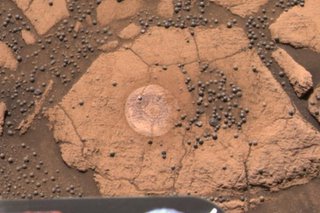Search This Blog
Monday, February 20, 2006
The Answer to Your Multiplayer Problems
Well, the answer to our problems has arrived in the form of the VPN client Hamachi, which is quite literally one of the best things to happen since sliced bread. Whoever thought this program up should be given a medal. It creates a secure virtual LAN through both hardware and software firewalls with ease, and configuring it is a snap. It has worked with all of the games that I have tried it with, including SMAC, Civilization IV, and Master of Orion II, all of which were run while also simultaneously hosting a TeamSpeak server. I have yet to have a Hamachi-related problem. It's definitely worth a download, especially if--like me--you've been reduced to head-banging frustration by the configuration of multiplayer game sessions in the past.
Getting More Out Of Civ IV
Firaxis Civ IV: get the patch (v. 1.52) and you can download a fankit that contains Civ IV images and more. The 1.52 patch is supposed to improve gameplay on lower-end computers, but be sure to read the details. The previous patch on 11/25/2005 fixed numerous gameplay problems. If you didn't get a patch yet, you haven't really played this game!
Overview of Civ IV on Wikipedia
CivFanatics.com has tons of articles, references, mods, maps, etc!
Modifications on CivFanatics:
Many great mods for Civ IV can be found on the CivFanatics site (link to the archive). I tried several mods prior to the 1.52 patch, but since then I’ve only tried MPME, the Multiplayer Movie Enabler, which makes multiplayer games as interesting as the single-player. This is a great mod! In general, I’m most interested in mods that don’t make radical changes to the game play. Most of all, I’d like to see a new tech tree – one that actually makes sense and has a number of new techs added in. Some fans have created major modifications that sound interesting should they ever be completed. For example, one group is working on a Star Wars mod that will set the game in the Star Wars universe. Another group is creating a Moon Colonization mod that sets the game on the Moon. And another group is creating a fantasy-themed mod (Fall from Heaven).
Tuesday, February 14, 2006
The Latest in Space Exploration
New Horizons: the first spacecraft to visit Pluto and Charon (Pluto’s moon).
 New Horizons was launched on Jan. 19, 2006 and will flyby Pluto in July 2015. It will continue to the outermost solar system in order to perform flybys of the Kuiper Belt Objects beyond the orbit of Pluto. The science instruments onboard the spacecraft will provide information on the surface properties, geology, interior makeup and atmospheres of the bodies it encounters.
New Horizons was launched on Jan. 19, 2006 and will flyby Pluto in July 2015. It will continue to the outermost solar system in order to perform flybys of the Kuiper Belt Objects beyond the orbit of Pluto. The science instruments onboard the spacecraft will provide information on the surface properties, geology, interior makeup and atmospheres of the bodies it encounters.Image: Liftoff of the Atlas V carrying NASA's New Horizons spacecraft to a distant date with Pluto. Image Credit: NASA/KSC
Mars Reconnaissance Orbiter: seeking evidence for long-duration water on Mars and scouting future landing sites
 MRO was launched Aug. 12, 2005, and will arrive at Mars in March, 2006. MRO will use its science instruments to closely examine the surface to look for minerals or features that are evidence of long-term water on Mars. It will also look for underground water or ice and monitor the atmosphere.
MRO was launched Aug. 12, 2005, and will arrive at Mars in March, 2006. MRO will use its science instruments to closely examine the surface to look for minerals or features that are evidence of long-term water on Mars. It will also look for underground water or ice and monitor the atmosphere. Image: Mars Reconnaissance Orbiter (artist's conception). Image credit: NASA/JPL
Stardust: NASA’s comet sample return mission
Stardust was launched Feb. 7, 1999, and collected cometary dust during its close encounter with Comet Wild 2. The spacecraft also collected interstellar dust (consisting of both materials from outside our solar system and possibly materials left over from the formation of our solar system). Stardust captured the dust in a silica-based aerogel.
 The rendezvous occurred January 2004, and the samples were returned to Earth on Jan. 15, 2006. We expect some really interesting new research to come from these samples now that they are back here on Earth where they can be studied thoroughly in the laboratory.
The rendezvous occurred January 2004, and the samples were returned to Earth on Jan. 15, 2006. We expect some really interesting new research to come from these samples now that they are back here on Earth where they can be studied thoroughly in the laboratory.
Image: Composite of comet Wild 2. This composite image was taken by the navigation camera during the close approach phase of Stardust's Jan 2, 2004, flyby of comet Wild 2. Several large depressed regions can be seen. The images show an intensely active surface, jetting dust and gas streams into space and leaving a trail millions of kilometers long. Image credit: NASA/JPL-Caltech.
Cassini-Huygens: international exploration of the Saturn system
The Cassini Orbiter and Huygens Probe was launched Oct. 15, 1997, and arrived at Saturn in July, 2004. The Huygens Probe was released into the Titan atmosphere on Jan. 14, 2005, and provided the first images of the surface of Titan (the largest of Saturn’s moons, and the only moon in the solar system to have a thick atmosphere).
Mars Express: ESA’s first visit to another planet
Mars Express was launched Jun. 2, 2003 and arrived at Mars in December, 2003. It is the European Space Agency’s (ESA) first visit to another planet. Mars Express is seeking to answer questions about Martian geology, atmospheric science, and water, as well as the potential for life on Mars. Mars Express features a radar instrument, which is the first of its kind at Mars.
 Results from Mars Express include: the first detection of methane in the Martian atmosphere, evidence for recent volcanic activity on Mars (within the last 2 myr), and the identification of sulfates and phyllosilicates from orbit (evidence that water was present).
Results from Mars Express include: the first detection of methane in the Martian atmosphere, evidence for recent volcanic activity on Mars (within the last 2 myr), and the identification of sulfates and phyllosilicates from orbit (evidence that water was present).Image: Mars Express. The mission's main objective is to search for subsurface water from orbit (artist's conception). Image credit: ESA
Mars Exploration Rovers: NASA’s “twin robot geologists”.
The MERs were launched toward Mars in June and July, 2003, and landed on Mars in January, 2004. The primary goal of the rovers is to search for evidence of water activity on Mars. One rover (Spirit) landed in Gusev Crater, which was thought to be an ancient lake bed. The other rover (
Both rovers have survived more than one Martian year on the surface of Mars (approx. 2 Earth years).
Friday, February 10, 2006
The Greatest Strategy Games that Nobody Remembers
Master of Orion II
Rules of Engagement 2
Syndicate
Alien Legacy
Buzz Aldrin's Race into Space
 Master of Orion II (1996): This one actually doesn’t really fall into the “nobody remembers it” category, but the recent sequel Master of Orion 3 was terrible, so I’m just going to include MOOII on this list anyway. The original Master of Orion is the closest thing we’ve ever seen to “Civilization in Space.” It was a masterpiece of design, having a simple yet deep interface and giving the user amazing flexibility in their actions. You could, for example, build giant fleets of custom-designed starships (including Death Star-like planet busters) or a network of stargates for your smaller yet more powerful ships (or both). It also had a compelling sci-fi storyline, the best enemy AI there ever was in a strategy game until Alpha Centauri in 1999, and amazingly fun turn-based-but-it-felt-like-real-time starfleet combat. [Quick side lesson to the modern game developers who feel a compulsive need to produce hard-drive-sucking multi-gigabyte games: MOO crammed gameplay that is still fresh and current 13 years later onto three 3.5” 1.44 MB floppy disks, for a total size of about 7 MBs.]
Master of Orion II (1996): This one actually doesn’t really fall into the “nobody remembers it” category, but the recent sequel Master of Orion 3 was terrible, so I’m just going to include MOOII on this list anyway. The original Master of Orion is the closest thing we’ve ever seen to “Civilization in Space.” It was a masterpiece of design, having a simple yet deep interface and giving the user amazing flexibility in their actions. You could, for example, build giant fleets of custom-designed starships (including Death Star-like planet busters) or a network of stargates for your smaller yet more powerful ships (or both). It also had a compelling sci-fi storyline, the best enemy AI there ever was in a strategy game until Alpha Centauri in 1999, and amazingly fun turn-based-but-it-felt-like-real-time starfleet combat. [Quick side lesson to the modern game developers who feel a compulsive need to produce hard-drive-sucking multi-gigabyte games: MOO crammed gameplay that is still fresh and current 13 years later onto three 3.5” 1.44 MB floppy disks, for a total size of about 7 MBs.]The original MOO was hugely fun to play and was therefore a big success. Unusually, the original development team was brought back and given a chance to make a sequel to a game that was already considered a classic. The results were astounding. The designers radically expanded every facet of the game. You now had complete multi-planet star systems to colonize. You could drop research stations onto airless moons or terraform molten worlds. There were almost twice as many alien races, a dizzying array of custom starship choices, heroes to recruit and use as colony governors and military commanders, an enhanced diplomacy screen, ground combat, build queues, a revamped and improved fleet battle interface, a new diplomacy interface, a humongous tech tree seriously larger than the tech tree in the first game, more alien artifacts, and the addition of the Borg-like Antarans in order to spice up the gameplay—all done with LAN support in high-res SVGA graphics. In short, no turn-based strategy game before or since has offered more strategic options to the player in such a fun and playable package, although Alpha Centauri comes very, very close.
Although considered a classic today, by my recollection Master of Orion II wasn’t as well-received as its predecessor at the time. It was the follow-up to a beloved classic, which is always a tough act to follow, and most of the criticisms directed at the game had to do with the fact that the immensely deep and complex MOO II was the opposite of MOO. It was also released in-between Civilization II and Alpha Centauri, and was overshadowed to some extent by those two legendary computer games. I’ve played both MOO games extensively and they both have a different feel. The first game is slightly more fun, but the second is more satisfying, and provides all of the strategic options you have in modern games like SMAC or Civ IV. MOO II is still the best space-conquest game ever produced (it’s way better than the much-lauded Galactic Civilizations). Because it runs very well in Windows XP, it still occupies space on my hard drive, 10 years later.
 Rules of Engagement 2 (1993): The last game to come out of Impressions before its purchase by Sierra, this game was described by Compute Magazine as the first “Space Opera Simulator”. Clearly inspired by Star Trek (right down to an interface that strongly resembled the famous TNG LCARS look), this game put you in tactical command of a starship. Gameplay consisted of set-piece tactical engagements between you (or you and your fleet) and adversary forces, such as aliens or rebels. You generated your own Captain and worked your way up the ranks. You could also design your own starship and configure your fleet. You had to maneuver your starship (in two dimensions…just like Star Trek), launch weapons, land security crews, execute repairs, and coordinate fleet movements on the fly using the nifty four-panel interface. Commanding the starship was a lot of fun; you had all sorts of windows that you could bring up, each with deep functions and commands. ROE 2 was also designed to interface with a second game called Breach 3, so when you sent a boarding party to an alien spaceship, Breach 3 would load up and you could control your troopers in real time--cool.
Rules of Engagement 2 (1993): The last game to come out of Impressions before its purchase by Sierra, this game was described by Compute Magazine as the first “Space Opera Simulator”. Clearly inspired by Star Trek (right down to an interface that strongly resembled the famous TNG LCARS look), this game put you in tactical command of a starship. Gameplay consisted of set-piece tactical engagements between you (or you and your fleet) and adversary forces, such as aliens or rebels. You generated your own Captain and worked your way up the ranks. You could also design your own starship and configure your fleet. You had to maneuver your starship (in two dimensions…just like Star Trek), launch weapons, land security crews, execute repairs, and coordinate fleet movements on the fly using the nifty four-panel interface. Commanding the starship was a lot of fun; you had all sorts of windows that you could bring up, each with deep functions and commands. ROE 2 was also designed to interface with a second game called Breach 3, so when you sent a boarding party to an alien spaceship, Breach 3 would load up and you could control your troopers in real time--cool. RoE 2 is not remembered today for many reasons. First, (like the modern Starfleet Command series), it was too “realistic” to the detriment of fun. On Star Trek, no matter how dire the situation is, you can always count on Data or Geordi to save the day. Not so in RoE 2. Engagements could be frustrating, because as the Captain you had to keep track of a lot of things simultaneously. Without Scotty fixing his wee bairns or Sulu at the helm, more often or not your ship would go down in flames. Keyboard-mashing frustration, you say? Yep. Second, the designers put in a lot of work creating a rich science-fiction setting for the game but didn’t properly exploit it--the game shipped with only a handful of campaigns and a campaign editor. You were supposed to use it to “expand your own adventures.” For 1993, the campaign editor was astounding. You had branching storylines, animations, plots, briefing movies-you could do it all. Too bad the designers didn’t use their own creation more effectively—the campaigns were short and ramped up in difficulty quickly, and making your own was too much work. Frustrating, you say? You betcha. Still, complaints aside, ROE2 was an amazing achievement. Too bad they never got a chance to make a full-blown sequel.
RoE 2 is not remembered today for many reasons. First, (like the modern Starfleet Command series), it was too “realistic” to the detriment of fun. On Star Trek, no matter how dire the situation is, you can always count on Data or Geordi to save the day. Not so in RoE 2. Engagements could be frustrating, because as the Captain you had to keep track of a lot of things simultaneously. Without Scotty fixing his wee bairns or Sulu at the helm, more often or not your ship would go down in flames. Keyboard-mashing frustration, you say? Yep. Second, the designers put in a lot of work creating a rich science-fiction setting for the game but didn’t properly exploit it--the game shipped with only a handful of campaigns and a campaign editor. You were supposed to use it to “expand your own adventures.” For 1993, the campaign editor was astounding. You had branching storylines, animations, plots, briefing movies-you could do it all. Too bad the designers didn’t use their own creation more effectively—the campaigns were short and ramped up in difficulty quickly, and making your own was too much work. Frustrating, you say? You betcha. Still, complaints aside, ROE2 was an amazing achievement. Too bad they never got a chance to make a full-blown sequel.  Syndicate (1994): Way back in ye Olde Tymes before the Internet, you received news of upcoming computer games by flipping through Computer Gaming World. Or, more precisely, looking at the print advertisements in Computer Gaming World—the only source of information about what games were coming out. The ad for Syndicate was a two-page spread with a CG-rendered picture of a giant skyscraper and a blimp, a row of pictures at the bottom depicting small arms, and copy which said something like “It’s the future! Lead a four-man team of commandos on dangerous missions!” (Quick side note: Syndicate had the Biggest Box Ever, even for a DOS game—it was almost 3 and a half inches thick!!) Based solely on the ad which looked interesting, and the screenshots on the back of the box, I picked it up, expecting a game about near-future anti-terrorist special-ops. Such was how computer game purchases were decided in the Olde Tymes.
Syndicate (1994): Way back in ye Olde Tymes before the Internet, you received news of upcoming computer games by flipping through Computer Gaming World. Or, more precisely, looking at the print advertisements in Computer Gaming World—the only source of information about what games were coming out. The ad for Syndicate was a two-page spread with a CG-rendered picture of a giant skyscraper and a blimp, a row of pictures at the bottom depicting small arms, and copy which said something like “It’s the future! Lead a four-man team of commandos on dangerous missions!” (Quick side note: Syndicate had the Biggest Box Ever, even for a DOS game—it was almost 3 and a half inches thick!!) Based solely on the ad which looked interesting, and the screenshots on the back of the box, I picked it up, expecting a game about near-future anti-terrorist special-ops. Such was how computer game purchases were decided in the Olde Tymes.Buying a game without foreknowledge of
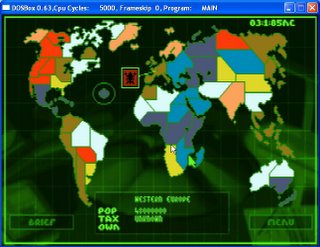 content or detailed review in hand? In this case, we got really lucky. Syndicate was an incredibly good computer game. Set in a dystopic future clearly inspired by Blade Runner, you played the executive in charge of a small corporation (hence the name Syndicate). You had to equip a four-man team of cyborg commandos with weapons and equipment then use that team to complete missions designed to help your corporation become the dominant force on the planet. The missions would take place real-time in an incredibly detailed 3-D world, complete with moving vehicles, homes, businesses, and civilian bystanders—all of
content or detailed review in hand? In this case, we got really lucky. Syndicate was an incredibly good computer game. Set in a dystopic future clearly inspired by Blade Runner, you played the executive in charge of a small corporation (hence the name Syndicate). You had to equip a four-man team of cyborg commandos with weapons and equipment then use that team to complete missions designed to help your corporation become the dominant force on the planet. The missions would take place real-time in an incredibly detailed 3-D world, complete with moving vehicles, homes, businesses, and civilian bystanders—all of which could be destroyed by your actions. The best part of the game was the complete freedom it offered. You could interact with this world in ways that surpass modern games, such as hopping into any vehicle (and I do mean any, from tanks to police cars to fire engines to trucks), knocking down walls or other objects, and hiding in the shadows. You could take weapons from downed opponents and use them. As long as the mission goals were met, you could literally use any means you desired to achieve your objectives, from stealth infiltration to missile launchers. As you completed missions you acquired more territory, which gave you more income, and thus better equipment. You could even choose the missions that you wanted on a RISK-style strategic map. It was great fun. This game was hailed as a classic immediately upon release, but because it predated the Internet (and was followed by an inferior sequel) it has dropped off the radar—which is a shame. The fact that a 10 megabyte game from 13 years ago offered more interactivity with your environment than even Half-life 2 is pretty sad, when you think about it.
which could be destroyed by your actions. The best part of the game was the complete freedom it offered. You could interact with this world in ways that surpass modern games, such as hopping into any vehicle (and I do mean any, from tanks to police cars to fire engines to trucks), knocking down walls or other objects, and hiding in the shadows. You could take weapons from downed opponents and use them. As long as the mission goals were met, you could literally use any means you desired to achieve your objectives, from stealth infiltration to missile launchers. As you completed missions you acquired more territory, which gave you more income, and thus better equipment. You could even choose the missions that you wanted on a RISK-style strategic map. It was great fun. This game was hailed as a classic immediately upon release, but because it predated the Internet (and was followed by an inferior sequel) it has dropped off the radar—which is a shame. The fact that a 10 megabyte game from 13 years ago offered more interactivity with your environment than even Half-life 2 is pretty sad, when you think about it.  Alien Legacy (1994): This game was released by Sierra the same year as the legendarily awful Outpost, which was also released by Sierra. Unlike Outpost, Alien Legacy was actually good. It was set in the late 21st century, at a time when the United Earth forces are at war with a brutal alien race. You played the role of the Captain of a Bussard Ramjet starship sent to Beta Caeli star system in order to preserve the human race. Although you were supposed to be the second ship to arrive, something mysterious happened to the first ship after arrival, so now you have to not only unravel the mystery but successfully colonize the star system. As the Captain, you interact with and give
Alien Legacy (1994): This game was released by Sierra the same year as the legendarily awful Outpost, which was also released by Sierra. Unlike Outpost, Alien Legacy was actually good. It was set in the late 21st century, at a time when the United Earth forces are at war with a brutal alien race. You played the role of the Captain of a Bussard Ramjet starship sent to Beta Caeli star system in order to preserve the human race. Although you were supposed to be the second ship to arrive, something mysterious happened to the first ship after arrival, so now you have to not only unravel the mystery but successfully colonize the star system. As the Captain, you interact with and give 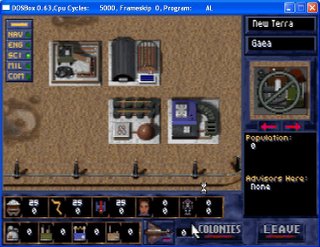 orders to the well-characterized officers of your starship, who help you to set up your colonies and report on happenings within the Beta Caeli star system. Because of strong writing and voice acting, you really felt like you were the leader interacting with actual officers of a starship. The coolest part of the game was the strategic view, which consisted of a nifty real-time view of the Beta Caeli system showing all the planets. You could rotate and zoom around the system, checking on the location of your ships, space stations, and surface colonies. You would click on the planets to bring up the planet view, where you would control your colonies and select which structures to build on the surface. You could also set up asteroid mining stations, space habitats, and gas-giant hydrogen extraction facilities. Actually, to date, this game is the best depiction of realistic solar system colonization that has ever been attempted, which is also kind of sad when you think
orders to the well-characterized officers of your starship, who help you to set up your colonies and report on happenings within the Beta Caeli star system. Because of strong writing and voice acting, you really felt like you were the leader interacting with actual officers of a starship. The coolest part of the game was the strategic view, which consisted of a nifty real-time view of the Beta Caeli system showing all the planets. You could rotate and zoom around the system, checking on the location of your ships, space stations, and surface colonies. You would click on the planets to bring up the planet view, where you would control your colonies and select which structures to build on the surface. You could also set up asteroid mining stations, space habitats, and gas-giant hydrogen extraction facilities. Actually, to date, this game is the best depiction of realistic solar system colonization that has ever been attempted, which is also kind of sad when you think  about it. A big part of the game was exploration; you had to fly scoutships around the planet looking for resources, alien artifacts, and clues to the fate of the previous expedition in a manner very similar to both Starflight and Star Control II—not surprising, since some of the same designers worked on Alien Legacy. This combination of strong writing, an excellent sci-fi setting, an intriguing mystery, Civ-style colony building, engaging exploration, and strategic decision-making meant that Alien Legacy was incredibly fun to play. This was a really good game, but because Sierra spent so much money promoting the unmitigated disaster that was Outpost instead it didn’t sell very well.
about it. A big part of the game was exploration; you had to fly scoutships around the planet looking for resources, alien artifacts, and clues to the fate of the previous expedition in a manner very similar to both Starflight and Star Control II—not surprising, since some of the same designers worked on Alien Legacy. This combination of strong writing, an excellent sci-fi setting, an intriguing mystery, Civ-style colony building, engaging exploration, and strategic decision-making meant that Alien Legacy was incredibly fun to play. This was a really good game, but because Sierra spent so much money promoting the unmitigated disaster that was Outpost instead it didn’t sell very well.Buzz Aldrin’s Race Into Space (Disk version in 1992; CD-ROM in 1994): This one is on my all-time top five list. It is hands down the most innovative strategy game that I have ever played. This game was incredibly addictive. It put you in the role as the Administrator of NASA or the Chief Designer of the Energia Bureau, charged with putting the first humans on Earth’s Moon. You had to select astronauts, choose rockets, research new technologies, build ground facilities, and then schedule and fly missions to achieve this goal, all while staying under budget. You
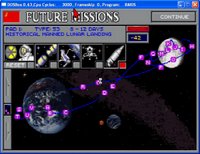 had a virtually limitless supply of options at your disposal, which is what made this game so appealing. Not happy with NASA’s dead-end Apollo strategy? Well, try modifying a Gemini spacecraft for lunar operations to use Earth Orbital Rendevous instead and see how it goes. Russians getting ahead? Start flying lunar missions in 1967, but at higher cost with less safety margins. The more successes you had, the higher your budgets got, which allowed you to fly more missions with better hardware. The US and the Soviets would alternate turns, and after your turn was complete, you’d watch the missions that you had scheduled unfold in glorious SVGA graphics with sound. Obviously, the first team on the Moon won the game!
had a virtually limitless supply of options at your disposal, which is what made this game so appealing. Not happy with NASA’s dead-end Apollo strategy? Well, try modifying a Gemini spacecraft for lunar operations to use Earth Orbital Rendevous instead and see how it goes. Russians getting ahead? Start flying lunar missions in 1967, but at higher cost with less safety margins. The more successes you had, the higher your budgets got, which allowed you to fly more missions with better hardware. The US and the Soviets would alternate turns, and after your turn was complete, you’d watch the missions that you had scheduled unfold in glorious SVGA graphics with sound. Obviously, the first team on the Moon won the game!Running the space program makes
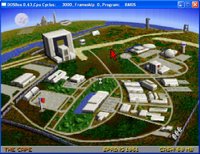 a darn good and fun computer game. It was really satisfying to watch your missions unfold. The best part was seeing the “What if” scenarios play out, because the designers put a lot of effort into creating animations using stock footage to simulate events that never actually happened, such as the launch of the gargantuan Nova rocket. At the time, the multimedia aspect of this game were nothing sort of astonishing; this was the first game I played using a Sound Blaster (as opposed to a PC speaker) and it was a great showcase for the then-new soundcard technology. The interface was a snap, and managing all the various aspects of the space race was a heckuva lot of fun. You could even do two-player hotseat matches with a friend, taking turns at playing space-program manager.
a darn good and fun computer game. It was really satisfying to watch your missions unfold. The best part was seeing the “What if” scenarios play out, because the designers put a lot of effort into creating animations using stock footage to simulate events that never actually happened, such as the launch of the gargantuan Nova rocket. At the time, the multimedia aspect of this game were nothing sort of astonishing; this was the first game I played using a Sound Blaster (as opposed to a PC speaker) and it was a great showcase for the then-new soundcard technology. The interface was a snap, and managing all the various aspects of the space race was a heckuva lot of fun. You could even do two-player hotseat matches with a friend, taking turns at playing space-program manager.So, what went wrong? Well, unfortunately, succeeding in the first
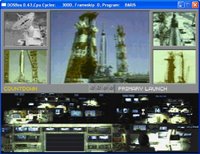
disk-based version of the game was really hard. The success or failure of your missions was determined by a vicious random-number generator. You had to research and flight test hardware in order to bring its “Safety Factor” (i.e., chance of not blowing up) in order to fly missions safely. Unfortunately, your missions would always blow up. Even if the “Safety Factor” was 98%, the computer’s random number generator would find that 2% chance of a catastrophic failure. During one memorable two-player game, a friend and I got so frustrated that we gave up and decided to have a “Most Catastrophic Failures” contest. Horrible, I know, but man, it was frustrating to watch your rockets blow up every time. Although everyone agreed it was an excellent game, the disk version was just too hard. Interplay released an updated CD-ROM version two years later with a relaxed random number generator, which was significantly more fun and had better graphics. By then it was unfortunately too late.
 This is a style of game that I hope somebody does again. With the new Vision for Space Exploration, interest in the Moon and the acknowledgement of the vital importance of space settlement for America's future is rising. I think that a near-term Space Colonization game, like BARIS but featuring better graphics (and not limited to the Space Race) would not only be a whole lot of fun, but spread the whole space settlement meme to a whole new generation. You could pick mission types, fight with Congress-I think it would be darn better than “SeaWorld Tycoon 5”. Maxis’ simMars game looked very promising in this regard, but unfortunately was canceled. Reportedly, a group of programmers has begun an Ur-Quan Masters-style port of the game to Windows XP, so hopefully more people will get a chance to try this timeless classic.
This is a style of game that I hope somebody does again. With the new Vision for Space Exploration, interest in the Moon and the acknowledgement of the vital importance of space settlement for America's future is rising. I think that a near-term Space Colonization game, like BARIS but featuring better graphics (and not limited to the Space Race) would not only be a whole lot of fun, but spread the whole space settlement meme to a whole new generation. You could pick mission types, fight with Congress-I think it would be darn better than “SeaWorld Tycoon 5”. Maxis’ simMars game looked very promising in this regard, but unfortunately was canceled. Reportedly, a group of programmers has begun an Ur-Quan Masters-style port of the game to Windows XP, so hopefully more people will get a chance to try this timeless classic.
Sunday, February 05, 2006
Greatest Strategy Games EVER!
Rise Of Nations
Civilization 4
Alpha Centauri:
Only one other strategy has ever come close to Alpha Centauri (AC) for me and that is Rise of Nations (RoN). Alpha Centauri has dated graphics now, and sometimes has issues running on newer machines, but the game play is the greatest! It has a sci-fi theme which I always prefer to any other. It has an awesome technology tree that is complex and multivariate. And winning by transcendence is great – it makes you feel so smart! With a good economy, you can research a level of transcendental thought per turn while you wait to build the transcendence “project”. These technologies give you bonus points. I have played this game on many different difficulty settings and with different leaders, including ones I’ve designed myself using the Faction Editor (in the Alien Crossfire expansion), and always this game is a joy! Tricks to getting a high score include: playing on medium difficulty settings, don’t dial the alien creatures down to “rare”, build all the secret projects, and have as many transcendent thoughts as possible. This will ensure an AC score of at least 80%, although I have gotten scores of 100% even at the easiest setting of “Citizen” and with rare alien life-forms. Of course there are other ways to win as well: by co-op, domination, etc. The trick to diplomacy is to know when to answer with what response, while taking into account the “bioscan” which shows the “happiness” level of the AI leaders, and to watch out for bogus trading and outright lies. Don’t be a push over, but don’t be a hard-nose either (just like real life – how cute!).
The task of picking a specific leader is unnecessary. I’d prefer one leader to a civ if it meant that more civs would be included. I think that the internet community generally agrees with me on this one because fans have created add-on civs (e.g.,
Oh yeah, and my final gripe about Civ 4 is the meaningless tech tree. In trying to simplify the game, they removed the most fun aspect – researching technologies. Researching technologies is the one advantage that games like Civ 4 and AC have over RoN. Due to the fast pace of RoN, technologies fly-by before you can enjoy them, whereas in Civ 4 and AC, you actually build a civilization and nurture it through the ages. RoN is great if you want to bonk-heads with some pansy AI in less than 4 hours. But if you want that addictive up-all-night nail-bitting strategic-planning feeling you can only get from epic gaming, then AC or Civ 4 is the way to go. One benefit of a short game like RoN is that if it’s not going well for you, don’t worry it will be over soon. Whereas in Civ 4, your torture can be drawn out into days-long sessions, while online friends mock you mercilessly.
Thursday, February 02, 2006
Finally...MMORPGs we can all enjoy
Taking Linux For a Test Drive
A quick point before we continue: I am definitely not a Microsoft-hater. In fact, I’ve always been an enthusiastic user of Microsoft products. By and large, in my experience, Microsoft products are just plain better…except for Internet Explorer 6.0, which is horrible. My last brush with Linux five years ago did nothing to change this viewpoint. I spent a lot of time with one of the Red Hat distros and was completely unimpressed. The interface was clunky, none of the programs worked very well. It was, to put it briefly, a very unpleasant experience. My considered response to folks who attempted to extol the virtues of Linux was therefore a firm “pffft.”
What a difference four years make! I have to say, I am mightily impressed with Ubuntu. The installation was a snap; even the arcane laptop hardware components of my Inspiron 8600 were correctly configured after the installation. The GNOME/Ubuntu interface is impressive, and is better than the Windows UI in many ways. I’m very surprised that the multiple workspaces concept hasn’t filtered into Microsoft Windows yet. It’s remarkably easy to do the things you want to do. I’m now curious to try the KDE desktop, which by all accounts is even better (or at least different).
Perhaps the most impressive thing is the functionality out of the box; Ubuntu comes with the equivalent functionality of both Adobe Creative Suite (PDFCreator, Inkscape, and GIMP) Microsoft Office (Evolution, OpenOffice.org 2.0)—and it’s one of the smaller distributions. I’m now curious to see what the larger multi-CD distributions (like SUSE 10) come with. It is not all roses: the multimedia functionality is severely lacking (that is to say, completely non-functional), apparently due to third-party licensing issues. I’ve yet to get Ubuntu successfully playing MP3s, for example, although that’s largely because I haven’t had time to twiddle with it, and by all accounts it can be done in a relatively straightforward manner if you do twiddle with it.
Bottom line: If you’re a home user who is happy with the Windows copy that came with your computer purchase, then you have no reason to switch over. However, if you’re a computer literate person, then setting up a dual-boot system is definitely something you should try. In fact, if I was starting a small business, I probably would use Linux instead. Desktop Linux has come a long way, and (to my incredible, pigs-are-flying-by-in-squadrons surprise) I think that it is now finally a realistic and potentially even preferable alternative to Windows. Except for one thing…
…and that’s gaming. Although Linux versions of some games are out there, most developers confine their compatibility to a single Linux platform. With so many Linux distributions out there, I gather that it is very difficult to make games that work on all of them. There are ways of playing Windows games in Linux environments, such as the subscription service called Cedega, which duplicates DirectX in Linux environments for a monthly fee. I hate monthly fees, so I wouldn’t consider that a “real” solution.
I think that this is an important point, and has a lot to do with why Linux isn't more popular. Computer games have always been the primary driver of hardware and software innovation. If it wasn’t for Wing Commander , for example, then we’d all still be using the PC speaker instead of Sound Blasters for audio. Although modern Linux systems have a lot going for them, until Linux systems can offer stable gaming platforms, then I can’t switch over. There are probably lots of other folks in the same boat. It is a good bet that the gaming-specific improvements that are going into Windows Vista were done to keep computer-savvy users like myself in securely in the Windows fold.
Still, I like Ubuntu so much that this temporary experiment might just have earned another gigabyte or so for a permanent little partition…and coming from a die-hard Linux basher like myself, that’s says a lot. Microsoft finally has some real competition, but the real winner is going to be the consumers.










